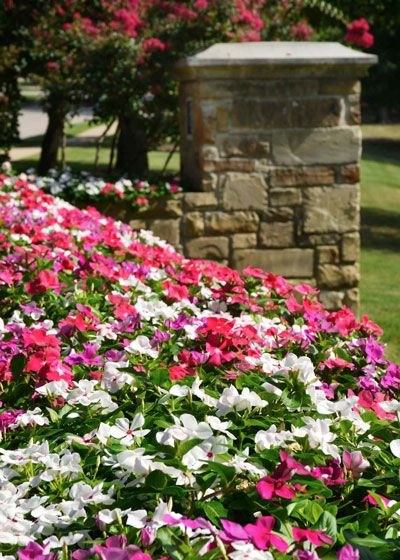Finally Time for Periwinkles
Nurseries have some really nice supplies of periwinkles for hot weather color, and the time to plant them has finally arrived.

Trailing selections of Cora periwinkles fill a bed beautifully.
Many of us grew up with periwinkles as the prime flower of summertime. In fact, we even let them reseed in their shades of white, pink and rosy-lavender-something.
And then sometime back in the 80s a soil-borne disease called aerial Phytophthora moved in like a plague and killed entire beds. Plants wilted and browned. On close inspection, their stems looked like someone had put a hot knife alongside them. There were browned lesions, and all the tissues above were shriveled and dead. Few plants were left standing.
The disease carried over in the soil. We were told that it was made worse by splashing rains and cool temperatures and we were afraid to plant periwinkles at all for maybe 25 years. Every time that we ventured out and tried them again, the disease struck them down.
Disease-resistant strains have been in the market for a while now, and they’ve brought the plant back into the mainstream. Oh, you still have to care for them properly. The selections labeled as ‘Coras’ are among the best.

Raised and sloped bed ensures good drainage in this large bed of Cora periwinkles.
Steps to success when you start growing periwinkles…
• Start with a disease-resistant strain such as Cora.
• Full sun is a must. It’s nice to have a plant that requires it.
• Don’t rush to plant them. Mid-May is plenty early. June is even better.
• Prepare their soil carefully. Raised beds are essential. Perfect drainage is a must.
• Drip irrigation works well. If you use overhead irrigation, do so in early morning so the plants can dry very quickly.
• Apply bark mulch or compost to the bed to minimize splashing of water up onto the stems.
• Grow periwinkles in pots for perfect drainage.
